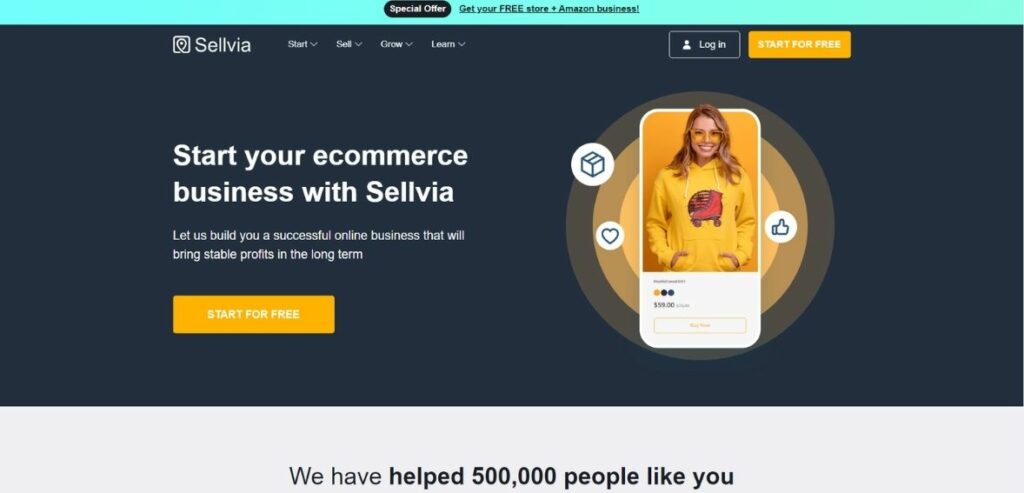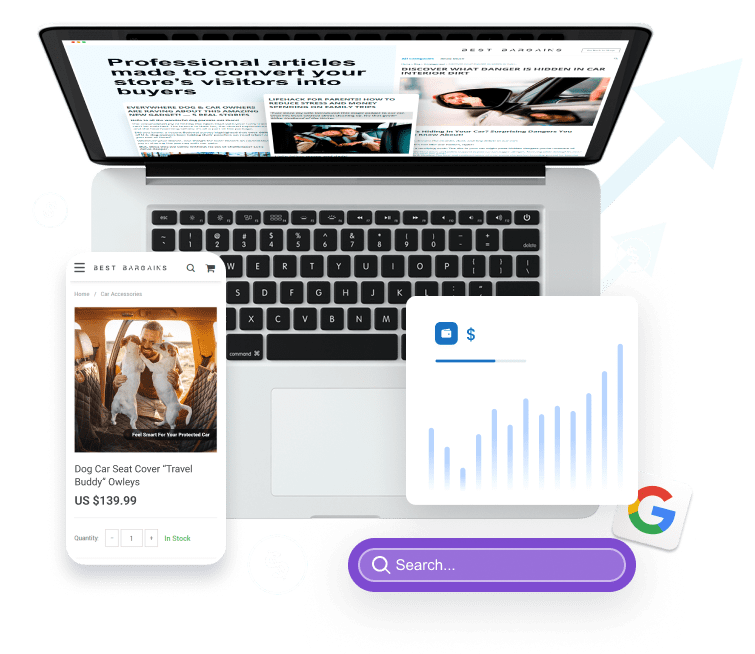Pro Guide For Choosing Sellvia Amazon Seller Dropshipping Services
Pro Guide For Choosing Sellvia Amazon Seller Dropshipping Services
Blog Article
How Do You Evaluate The Customer Support And Service Specifications Of An Amazon Seller Or Shopify Service For Dropshipping To Us Markets
Evaluation of customer service and support for dropshipping on the U.S. marketplace on Amazon Seller Shopify, WordPress (WooCommerce), or WordPress is critical since customer satisfaction is contingent on responsiveness, efficient communication and reliable resolution of issues, and more. This is how you can assess the customer support and support capabilities of each platform.
1. Amazon Seller
Amazon Customer Service Policies
Amazon has strict guidelines about how you communicate with customers. It's a challenge to answer all customer inquiries in 24 hours.
FBA sellers can save time when Amazon manages customer returns as well as requests. Merchant Fulfilled Network (MFN) requires that you handle returns, questions and refunds in a direct manner.
Help for Sellers
Seller Support: Amazon provides seller assistance through its SellerCentral platform. Here, you can access FAQs, resources live chat, email support, which can help resolve issues like accounts management and order issues.
Amazon is liable to its sellers for certain metrics, such as the Order Defect Ratio (ODR) or response times. Problems with customer service can result in account suspensions.
Steps to Assessment for Amazon Sellers:
Take a look at Amazon's Responsiveness Standards. Examine Amazon's standards regarding customer response times and decide whether you have enough bandwidth or the right tools (such a automated response system) to satisfy those standards.
Return Handling: If you're using MFN, make sure that your fulfillment partner or supplier provides support for returns. Amazon handles returns when you're using FBA. It's crucial to be aware of any issues and make sure that your customers are pleased.
Customer Service Tool: Make sure you're aware of Seller Central's tools for handling refunds, disputes, as well as general questions. You may want to consider third-party tools if require additional support to meet Amazon's stringent response requirements.
2. Shopify
Apps that provide customer service:
Shopify is integrated with Gorgias Zendesk and Re to offer customer support.
It has dashboards that allow customers to effortlessly handle their inquiries using different channels, including chat, email and social media.
Automated Communications: Shopify has many apps that provide automated responses. They include chatbots as well as FAQs. They can be used to help customers find answers quickly.
Shopify offers a wide range of customized messaging options such as email confirmations, emails to abandon cart and messages to follow-up with customers. This will help to build customer loyalty and satisfaction.
Order Tracking and Notifications
Shopify's real-time notifications permit customers to receive updates regarding their orders, shipment status, and tracking of delivery statuses. This transparency helps reduce customer queries regarding the status of their order.
Customer Order Status Page for Customer Order Status Shopify allows customers to check their order status through an order status page that reduces the requirement to contact support.
Shopify Evaluation:
Examine Available Apps: Evaluate applications for customer support, such as Gorgias which integrate directly with Shopify and offer an omnichannel customer service. This will save time dealing with customer queries.
Shopify offers a wide range of options for personalizing chatbots, templates for emails as well as automated replies. This will allow you to offer prompt and timely interactions with your customers.
After-Sale Customer Support: Determine whether the platform has solutions for after-sales customer support, such as quick refund processing using third-party apps or return labels. Shopify integrations make it easier to process returns and customer satisfaction process.
3. WordPress (WooCommerce).
Customer Service Plugins
Help Desk and Live Chat Plugins: WooCommerce offers plugins like LiveChat, Help Scout, and Zendesk for customer service, that integrate seamlessly into your website. These tools allow for customer service tickets, live chat, and knowledge bases.
Automated Chatbots. To get rapid responses, you can use AI-based ChatBot plugins.
Email Notifications: WooCommerce enables customized email notifications for orders confirmation, shipping and delivery, providing customers transparency on their orders.
Management of returns and order tracking:
Order Tracking Plugins Plugins such as TrackShip allow customers to access live information regarding their orders through your website. This will reduce the amount of inquiries related to the order.
Returns and Refunds WooCommerce offers flexible return and refund policy. WooCommerce plugins such as WooCommerce RMA allow for automated returns. This makes it simpler to process refunds.
WooCommerce Evaluation:
Examine plugins for chatbots such as live chat, ticketing and help. WooCommerce is popular thanks to LiveChat, which offers integrated customer service functions.
Automated Communication Automated Communication: Make tracking orders as well as status updates readily accessible for customers. This decreases the amount of inquiries about the status of orders. Utilize plugins such as TrackShip for automated tracking notifications.
WooCommerce allows you to set up flexible return policies. Use plugins to handle returns and make it more convenient for customers. Have a look at the most popular Sellvia review for more tips including ecommerce business, opening e commerce business, ecommerce storefront, dropshipping business, build an online shop, best ecommerce platform, sell via, online business online, best thing to sell online, best ecommerce platform and more.
How To Determine The Best Method Of Measuring The Degree Of Customization, Scaleability And Efficiency
In the case of dropshippers, assessing the ability to scale is vital. Amazon Seller, Shopify or WordPress (WooCommerce), all provide different levels of customization as well as growth and flexibility. Here's how to evaluate all of these aspects when evaluating an enterprise that focuses on dropshipping in the U.S.
1. Amazon Seller
Scalability:
Marketplace Exposure and Infrastructure Amazon has built-in scalability thanks to its large U.S. customer base, fulfillment infrastructure (Fulfillment by Amazon, or FBA), and established reputation. Dropshipping is an excellent method to boost the amount of traffic. However, it can result in increased competition, as well as less control over brand recognition.
Fulfillment-by-Amazon (FBA) FBA allows sellers to grow quickly, using Amazon's logistics network, which includes storage, shipping, and packaging. FBA however, is not the norm of dropshipping that is pure. This means that sellers might have to choose between Amazon's Fulfillment and managing third party dropship partnerships.
Amazon's listing restrictions have guidelines for dropshipping, which restrict certain activities like direct shipping from another retailer. The format of the listing is restricted, which affects branding and differentiate.
Customization:
Limited Store Customization Amazon tightly controls the look and feel of product pages, which limits the personalization of brands and user experience. Colors or layouts are not adjustable by sellers, and branding is limited to brand names and logos.
Branding Tool for Registered Brands - Amazon's Brand Registry includes tools like Enhanced Brand Content, A+ Content, and many more for sellers who have trademark registrations. These features allow customized content sections and images, as well as precise descriptions for listings of products. They aid in building brand awareness.
Amazon has a limited ability to control pricing. Coupons, discounts as well as Lightning Deals are offered. Prices are affected by the competitive market environment, as many customers just compare products in relation to price.
Amazon Sellers and Assessment Steps
Consider your fulfillment options: Decide which of the fulfillment options Amazon FBA and Merchant Fulfilled Network are better for you dropshipping model. If you decide to use MFN, make sure your dropshipping partners are able to comply with Amazon's requirements.
Consider Brand Registry.
Examine Price Strategies: You'll be able to determine if you're able keep profit margins intact and remain competitive by knowing Amazon's price structure and its dynamic pricing.
2. Shopify
Scalability:
Shopify offers different upgrade options. Starting with a basic Plan, users can then progress to more advanced Plans which include additional features and allow for more customization. Shopify Plus offers high-volume sellers advanced tools.
Dropshipping Networks and Applications: Shopify is easily integrated with dropshipping tools like Oberlo Spocket Modalyst. Sellers can integrate products into their platforms and complete orders on a regular basis, as business grows. Shopify works with shipping services like Shopify Fulfillment Network, ShipBob and many others to provide flexible logistical support.
Third-Party Integrations: Shopify has an extensive marketplace of apps which makes it simple for to integrate new features as your organization grows. Applications for marketing, analytics customer support, customer service and even inventory management are all available, creating a growth-ready infrastructure for dropshippers.
Customization:
Shopify allows you to modify themes. You can design your own storefronts. Dropshippers can modify themes to suit layouts, colors, and styles.
Shopify Liquid's code language is a powerful tool for app integration as well as advanced customisations. If you're familiar with development or are aided by developers, this makes it possible more intricate modifications. Shopify API allows integration of custom applications and connecting with third party services.
Shopify's Customer Experience customization features include recommendations for products loyalty programs, as well as personalized email flows that allow dropshippers to create a tailored shopping experience for U.S. consumers.
Assessment Methods for Storeify
Evaluate Your Growth Requirements: Determine if the Shopify plan you have comes with all the features you require. Shopify Plus offers multi-store features.
Consider Customization Options: Try different themes and consider customization requirements for your company's brand. It is possible to engage a developer if your website requires customized integrations or features that are coded.
Dropshipping integrations with apps Search for apps that work with Shopify or the preferred supplier. Check to see if they're scalable for order and inventory management.
3. WordPress (WooCommerce),
Scalability:
WooCommerce is hosted by a number of different web hosting providers. Managed WordPress hosting providers (e.g., WP Engine, Kinsta) can support high-traffic websites, but prices may increase as you scale.
Control of the infrastructure WooCommerce allows you to modify server configurations to ensure optimal performance as your order and traffic volume grows. This degree of control is ideal for advanced dropshippers with huge sales volumes and a need for flexibility in their tech stack.
The plugins for automation and fulfillment: WooCommerce supports plugins for automation, such as AliDropship, Printful, and Oberlo for WooCommerce. These plugins help with order processing as well as inventory updates, among other operational aspects as you grow.
Customization:
WooCommerce offers a variety of theme and design choices. Many can be completely custom-made. You can design a unique brand experience with CSS and HTML.
WooCommerce's plugin system gives users nearly limitless options for customization. Customers can improve their customer experience by adding plugins to provide SEO and abandoned-cart recovery loyalty programs, as well as other options. This is beneficial for U.S.-focused dropshipping, in which targeted marketing and optimization of conversion are essential.
WooCommerce provides code-level customization. It means those who have programming expertise (or who have access to developers) are able to build their own plugins, customize backend functionalities and create a tailored experience. The versatility of the platform allows you to customize every aspect of the site, including checkout pages and product pages.
Assessment Steps for WooCommerce:
Think about Hosting Scalability. Choose a hosting service that can handle an increase in traffic when your dropshipping business expands. Make sure the hosting plan includes the capacity to scale, such as storage space and bandwidth.
Evaluation of Themes and WooCommerce Themes and Plugins: Search for themes and WooCommerce plugins that can be customized, specifically to satisfy U.S. marketing needs. Identify which plugins streamline dropshipping procedures.
Consider Code-Level Modifications If you've got complex customisation requirements, make sure you have the resources (developer access and budget) for ongoing modifications. Have a look at the top Sellvia for website info including ecommerce co, drop shipping, build an online shop, drop shipping how to, ecommerce tools, sellvia log in, ecommerce dropshipping, ecommerce company, starting an online store, online business for sell and more. 